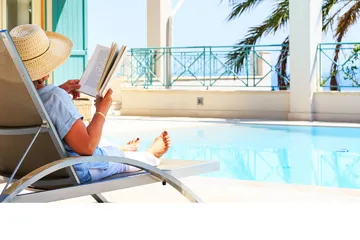Explore holidays in Syracuse and South East Sicily
The south east of Sicily - a region also referred to as the Val di Noto - is tailor-made for holidays, with its special blend of beaches and Baroque that makes it unlike anywhere else. Syracuse was one of the very first urban settlements in Europe, and you don’t need to spend long in this very charming coastal city - and Ortigia, its glorious, honey-coloured old town - to understand why. The area is an idyllic base for a villa holiday, rich in history and brimming with restaurants that showcase the very best produce from land and sea.
South of Syracuse, the coastline unfolds into some of Sicily’s finest beaches. Fontane Bianche, with its white sand and turquoise water offers classic beach days out from your villa, while Capo Murro di Porco is the place to head for waves and wild beauty. Continuing south you’ll find an almost unbroken stretch of beaches, punctuated by delightful seaside towns like Lido di Noto, Marina di Modica and Marina di Ragusa. The unspoilt shores of the Vendicari reserve are alive with birdlife, and San Lorenzo and Calamosche are highlights for any beach-lover’s hit list. The 8km-long stretch of beach at Santa Maria del Focallo is also one our personal favourites.
Encompassing the whole of the south-eastern corner of Sicily, Val di Noto stretches from the Baroque splendour of UNESCO-heritage towns like Noto, Modica, Ragusa, Scicli and Ispica down to the southern coastline, through rolling landscapes of olive groves and vineyards.
A selection of our holidays in Syracuse and South East Sicily
* Prices shown are for a seven-night stay at the lowest accommodation-only rate.
Our guide to Syracuse and South East Sicily
In this section...
Introduction to Syracuse and South East Sicily
Syracuse and Ortigia
Syracuse is a delightful coastal city that lies partly on the island of Ortigia. The island is about a mile long, with an impressively intact castello at its tip. It’s a magical place to wander at leisure, stopping at the authentic daily market or skirting the island along the old city walls. People have lived and worked on Ortigia island for 3,000 years, but this is no museum piece. Joined to the mainland by bridges, the old town fizzes with life, from flamboyant Baroque buildings to bustling fresh markets, stylish small shops to superb seafood restaurants that quite rightly bill themselves as a ‘food experience’.
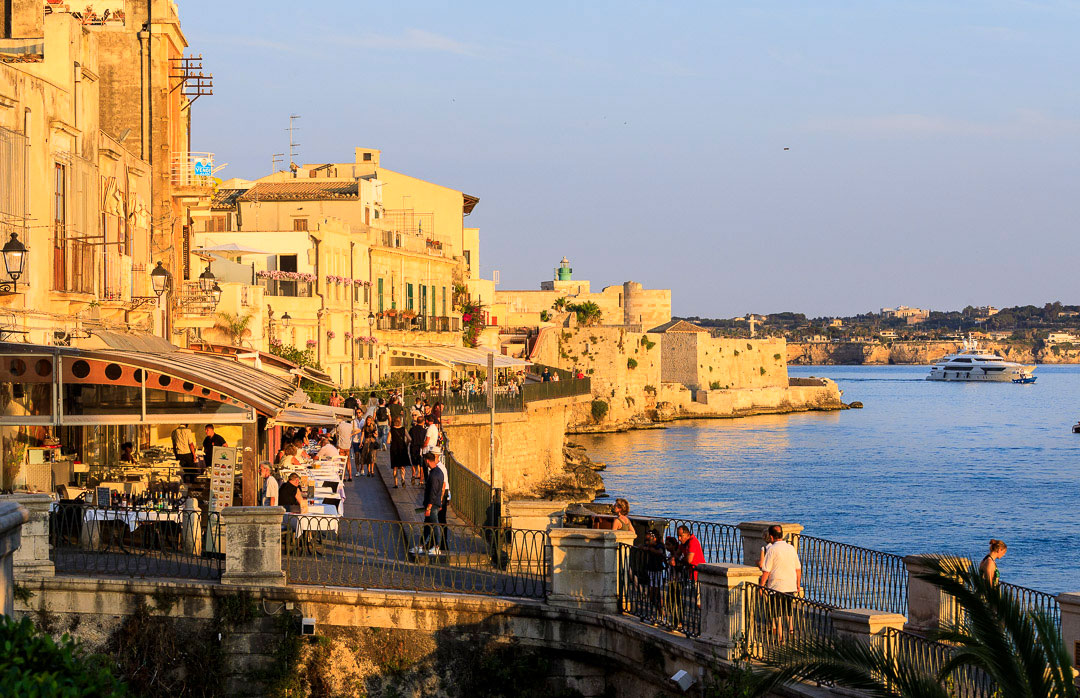
From the Temple of Apollo to the ‘Ear of Dionysius’ dug in Roman times as a water storage for the city, Syracuse is literally littered with historic remains. It’s easy to get blasé with such riches on display, but hard not to be impressed by the 2,500 year old Greek theatre where plays are still performed. The theatre is part of the huge archaeological park, and also contains a second (Roman) theatre where gladiator battles once entertained blood-thirsty crowds. And if all this starts to feel more like history lesson than a holiday, you can book a boat trip from Ortigia and discover the serene loveliness of this coastline from the sea instead.
Val di Noto Baroque
Greeks, Romans, Byzantines, Arabs and Normans have all left their mark in this region, but it was the destruction and subsequent rebuilding of the main towns following a massive earthquake that saw the birth of Sicilian Baroque – an ornate, elaborate architectural style that’s proudly preserved in the eight UNESCO-classified towns of Noto, Modica, Ragusa, Scicli, Palazzolo Acreide, Caltagirone, Militello and Ispica.
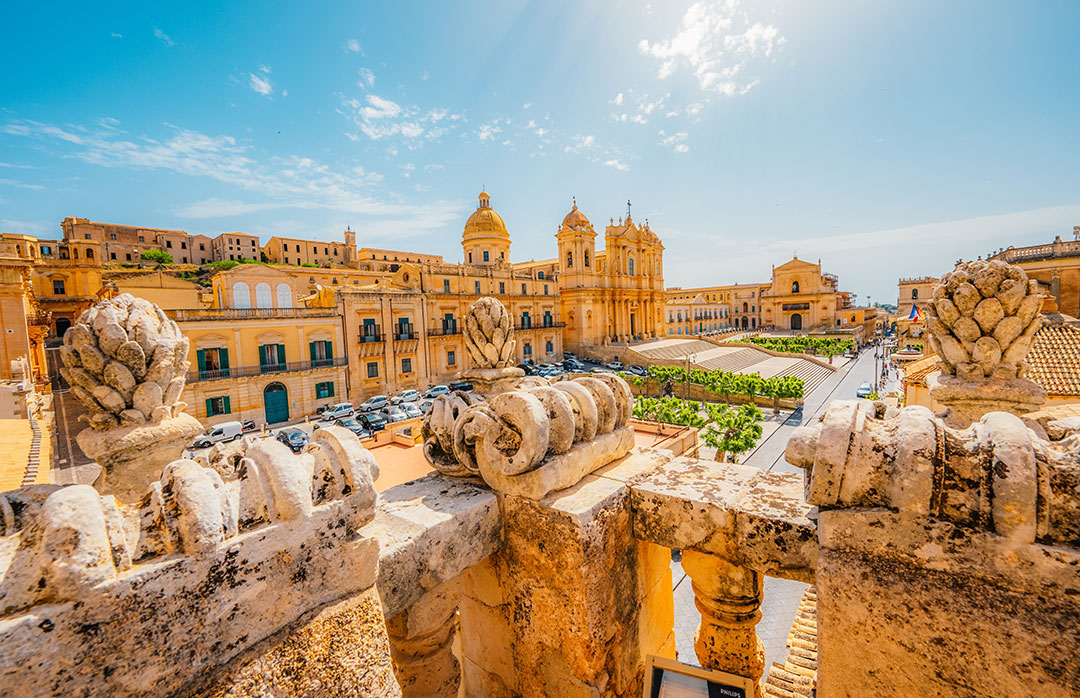
Noto was already a prosperous city when the earthquake hit on 11 January 1693, but after the shock of the destruction, the visionary inhabitants of this region saw the enormous task of rebuilding from scratch as an opportunity; from the ruins rose a new age of elegance, and Noto today is considered a masterpiece of Baroque urban planning, with its wide avenues and elegant piazzi built of pale golden limestone. So exquisite are the Baroque towns that you might feel as though you’re walking through a film set, and of course you are: the Netflix series White Lotus filmed some iconic scenes in Noto, whilst the cult Italian crime series Inspector Montalbano is centred around various Val di Noto locations including Scicli and Ragusa.
Like Syracuse, Ragusa is a city of two halves, spread over two sides of a valley connected by a bridge. Ragusa Ibla is the old part, full of narrow streets and arty shops selling Sicilian pottery. It’s superbly atmospheric, especially at night, whether you’re tucked into a tiny trattoria in the back streets, or viewing its flood-lit splendour from the other side of the bridge.
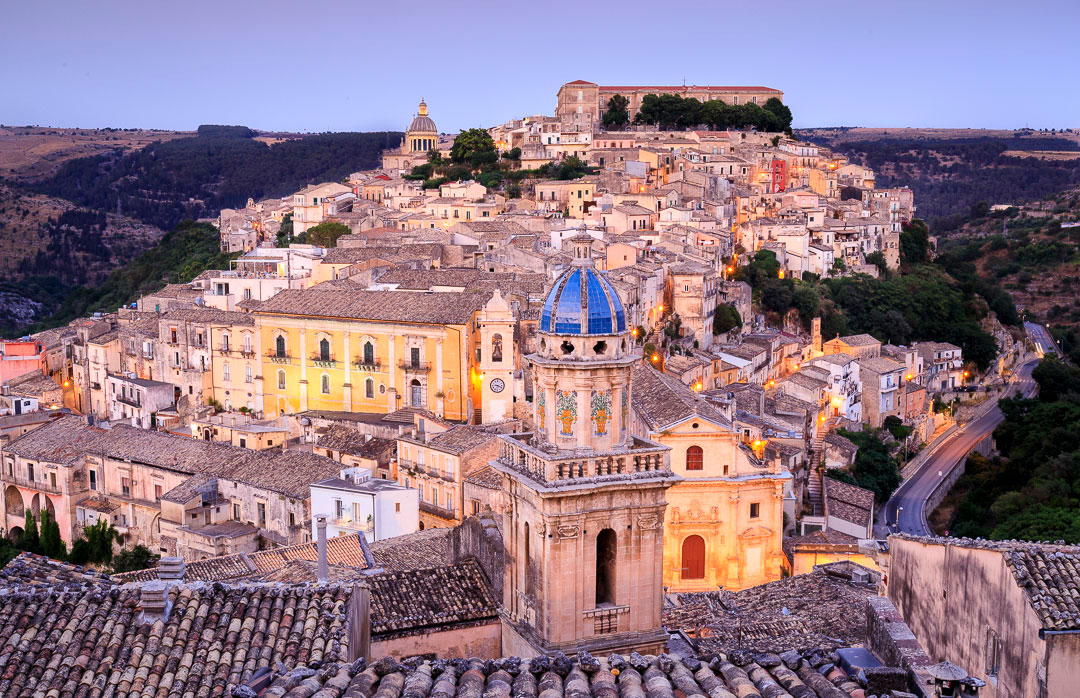
Modica is another Baroque beauty but this one has an extra surprise: chocolate! The conquistadors brought chocolate to Sicily in the 16th century, and the original Aztec method survives here, resulting in a dark, grainy treat; it’s a world away from Cadbury – but it’s very delicious. And finally there’s Scicli, as richly decorated as the more famous Noto, Ragusa and Modica, but relatively undiscovered by comparison. Combine a visit here with a few hours on the beach at nearby Sampieri or Donnalucata for a fantastic day out in southern Sicily.
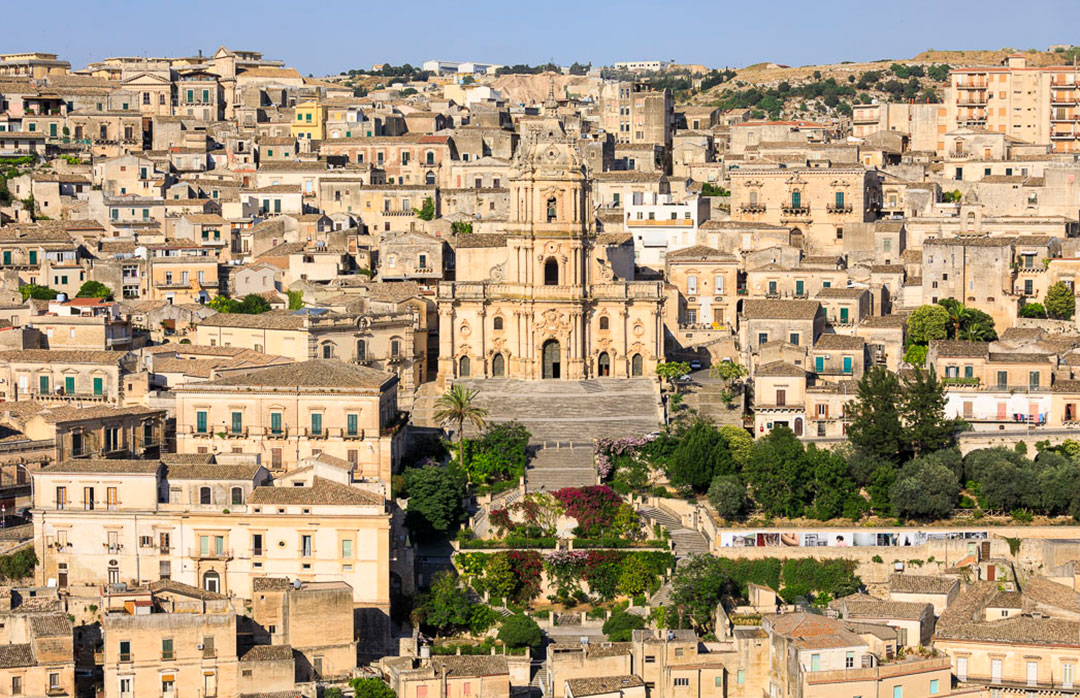
If you'd like to discover the Baroque towns but prefer a mainly beach-based holiday, we recommend staying around Santa Maria del Focallo on the southern coast, which puts you close to a stunning, 8km-long sandy beach, but still within 40 to 60 minutes of the best of the Baroque towns by car.
The Etna Experience
Rising dramatically to 3,323m above sea level, Mount Etna dominates the eastern Sicily landscape. For centuries, the volcano has inspired awe and admiration, shaping the land and the lives around it both literally and figuratively.
You can take a trip to Etna from all over Sicily, and typically it would take around 90 minutes to drive from Syracuse. Two main routes lead to Etna’s upper slopes: from the south, the cable car at Rifugio Sapienza whisks you up to 2,900m, where further hikes to the summit craters are possible with a guide. From the north, Piano Provenzana offers 4x4 access to 2,400m, with walking routes from there. “A’ Muntagna,” as locals call it, is both feared and revered. Fertile lower slopes support lush citrus groves and vineyards, while its frequent, photogenic eruptions draw the eyes of the world. This is not just a volcano but also a high mountain, and not one to be tackled without a guide due to its fast-changing weather and rugged terrain. However, with good boots, warm layers, reasonable fitness and a spirit of adventure, hiking Etna is a thrilling way to witness nature’s drama up close.
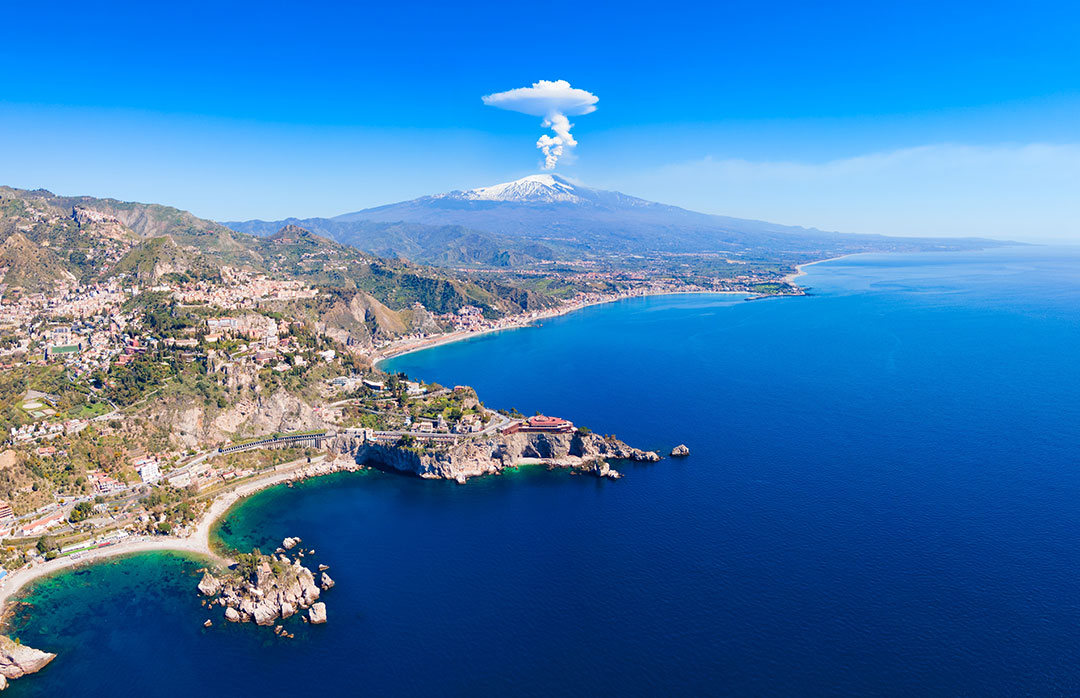
At a glance
Map and other regions
Food & drink
A taste of Sicily
The cuisine of Sicily is flavoured with influences from all around the Mediterranean and beyond, but the produce is strictly local, meaning that almost everything you eat here will travel no more than a few kilometres from field or sea to plate. Fish - most often tuna and swordfish - appears on every menu: we loved Arab-inspired pasta con le sarde, pungent with sardines, pine nuts and raisins, and the delicious sword-fish involtini. Pasta alla Norma is Catania’s signature dish of fried aubergine, tomato and ricotta, or if you’re hankering for some meat, try cavatieddi, a pasta and pork ragu dish from Ragusa and Modica. The many combinations of ricotta, mozzarella, aubergine, tomatoes, almonds, olives and beans make for lots of veggie options, and for unflinching omnivores, there are rich, smoky salamis made from all kinds of meats, including donkey!
Picnics are an effortless pleasure courtesy of scacce (stuffed flatbread), pane cunzato (bread topped with anchovies, tomatoes and cheese) cartocciata (rolls filled with mozzarella and ham or aubergine) and of course, deep-fried arancini, served round in the west and cone-shaped in the east. Or just spread some savoury pistachio cream on your bread for an instant Sicilian sandwich.
Desserts and sweets can be rich and calorific, like cannoli and cassata, or light and refreshing, like granitas, either fruit based or flavoured with almond or coffee for the best hot-weather breakfast ever.
Wines of Sicily
Sicily’s wines are as sun-drenched and characterful as the island itself. From the bold, velvety Nero d’Avola, rich with dark fruit and spice, to the elegant, cherry-scented Cerasuolo di Vittoria, the island’s only DOCG wine, there’s a bottle for every mood. On Etna’s volcanic slopes, Carricante and Nerello Mascalese thrive, producing mineral-driven whites and refined reds. For something sweeter, sip a golden Moscato di Noto or the amber nectar of Passito di Pantelleria. Round off your meal with Amaro Ibleo or Carretto, herby liqueurs served as a digestif.





Beaches

Fontane Bianche
Taking its name from the freshwater springs that rise here, this is a family-friendly option with good amenities and clear, shallow waters.
Location…
Around a 25min drive south of Syracuse.

Lido di Noto
A sweeping sandy shoreline makes this a very popular resort beach, backed by all the little shops and restaurants you could want for a day at the seaside.
Location…
Around 5km south east of Noto.

Calamosche Beach
Hidden between two rocky promontories, Calamosche offers calm, clear waters and a pristine natural setting. It's one of Sicily’s most beautiful and secluded beaches.
Location…
Part of the Vendicari Nature Reserve, about a 25min drive south of Noto.

San Lorenzo Beach
The Caribbean-like clarity of the sea makes this beach superbly photogenic, with easy access to beach facilities, ideal for families and comfort lovers.
Location…
A short drive south of Vendicari, accessible via Marzamemi.

Marianelli beach
Near the ruins of ancient Eloro, this long sandy beach merges history and nature, with shallow waters ideal for swimming.
Location…
Slightly north of Calamosche, within the Vendicari reserve.

Cittadella dei Maccari
A tranquil beach in the Vendicari Reserve, superbly photogenic with for clear water, golden sands and stunning sunsets.
Location…
In the southernmost part of the reserve, close to Noto and San Lorenzo

Santa Maria del Focallo
A long beach known for its fine, golden sand and dunes with eucalyptus groves, this is a lovely sunset spot on the west coast.
Location…
About a 10-minute drive from Ispica

Isola delle Correnti
A wild spot where the Ionian and Mediterranean seas meet, ideal for wave-lovers and surfers, with a tiny islet just offshore.
Location...
At the southernmost point of Sicily.

Carratois Beach (Punta delle Formiche)
Wide, sandy stretches and shallow, warm waters make this one great for families and sunset walks. Combine with a visit to Isola delle Correnti.
Location...
Around 35mins south of Ispica.
Things to do

The Necropolis of Pantalica
With some 5,000 pre-historic and early Christian tombs cut into the rock, this is one of the largest necropolises in Europe. Located close to Syracuse, the surrounding site is also very beautiful for walking in the cooler months.

Capo Murro di Porco
This wild promontory is part of the Plemmirio marine park close to Syracuse. Unspoilt and entirely natural, save for some WWII pillboxes and bunkers, it’s a hauntingly beautiful spot, frequented by divers, walkers, photographers and birdwatchers but well off the main summer tourist route.

Catania
Sicily’s second city lies at the foot of Etna, and is a vibrant yet relatively compact place to explore. Despite multiple eruptions, many ancient remains survive, and some of the newer building are actually built from lava. Don’t miss the fresh fish market and perhaps a plateful of the local speciality, pasta alla Norma.

The Chocolate Makers of Modica
Discover Modica’s chocolate boutiques making Aztec-style chocolate. The cold-processing method gives it a unique grainy texture and intense flavour. Modica chocolate contains only cacao, sugar and natural flavours like vanilla, cinnamon, orange zest or chili – wickedly good.

Visit the Volcano
It’s impossible to ignore Etna, and there are a variety of ways to get up close to the world’s most active volcano. Whether you decide to hike, mountain bike or even take a helicopter trip over the crater, we strongly recommend using an experienced local company to ensure your safety and enhance your experience.

Explore Inland
In between the Baroque towns of the Val di Noto are rolling limestone hills, steep gorges and rugged countryside perfect for walking or mountain biking. It’s especially lovely in spring, when wild herbs and the creamy flowers of the olive bushes scent your path past prehistoric necropolises, Greek and Roman ruins, and Byzantine cave churches.

Noto
Head first to Corso Vittorio Emanuele to admire its golden Baroque architecture, including the grand Cathedral of San Nicolò. Visit Palazzo Ducezio and Nicolaci Palace for ornate balconies and frescoes. Relax over coffee, explore artisan boutiques, and taste almond granita. Make a day of it with swim at Lido di Noto nearby.

Vendicari Nature Reserve
This protected coastal park on the coast between Noto and Portopalo di Capo Passero is home to hundreds of bird species, including flamingos, herons, and stork - especially during migration seasons. Well-marked walking paths connect the beaches, ruins, and observation decks, with some of Sicily’s best and least developed beaches nearby.

Marzamemi
Perched on a slender promontory with sweeping views, this charming coastal village tells a story shaped by centuries. First settled in the 10th century, it later flourished as a thriving tuna-fishing centre. Today’s visitors come to eat well in its pretty piazza restaurants and pick up souvenirs in its picturesque back streets.
Towns and Villages

Syracuse/Ortigia
Syracuse was once a powerful ancient Greek city. Its archaeological park, Parco Archeologico della Neapolis, features the impressive Greek Theatre and Ear of Dionysius cave. The island of Ortigia, Syracuse’s historic heart, invites you in to explore bustling markets and authentic Sicilian food. Visitors come for its blend of history, culture and coastal beauty, best discovered on foot around the Greek ruins, along narrow lanes or just sitting and enjoying fresh seafood by the water’s edge.

Noto
Noto, known as the “Capital of Baroque,” is a UNESCO World Heritage Site in south-eastern Sicily. Rebuilt from ruins after the 1693 earthquake, it’s a place of architectural grandeur, famous for golden limestone buildings like the Cathedral of San Nicolò and elegant palaces lining Corso Vittorio Emanuele. The town glows beautifully at sunset, so it’s worth lingering for dinner or at least a chilled aperitif at the end of the day.

Ragusa Ibla
Ragusa, perched over a deep gorge, consists of two distinct parts: Ragusa Ibla (the old town) and Ragusa Superiore (the newer section). Ibla is a maze of steep alleys, Baroque churches and charming piazzas, including Duomo di San Giorgio. As part of the UNESCO-listed Val di Noto Baroque towns, Ragusa captivates with its beauty and views, popular with Italian visitors who come for typical Sicilian cuisine and to see the filming locations for the long-running TV series Inspector Montalbano.

Modica
Modica, also a UNESCO Baroque town, is celebrated for its dramatic hillside layout and distinctive chocolate-making tradition. The city’s divided upper and lower sections are linked by stairways winding past ornate churches like San Giorgio and San Pietro. The must-do attraction here is a visit to taste Modica’s unique chocolate, made using ancient Aztec methods.

Taormina
Taormina is one of the departure points for trips to see Mount Etna, and you already get amazing views of the volcano, with beaches below adding to the spectacle. Its ancient Greek theatre remains one of Italy’s most striking archaeological sites and still hosts performances today. Wander along the pedestrianized Corso Umberto, lined with shops, cafes and restaurants, or pop into the Taormina Archaeological Museum, which houses artefacts from the ancient Greek and Roman periods.

Marzamemi
Marzamemi, a picturesque fishing village near Noto, grew around its historic tuna-processing plant (tonnara). Its stone buildings, turquoise waters and lively piazza give it a coastal charm with a sprinkling of interesting little shops to add to the appeal. It’s a laid-back little place to come and enjoy fresh seafood, local wine and nearby beaches, as well as summer festivals that bring music and film to the town square.















